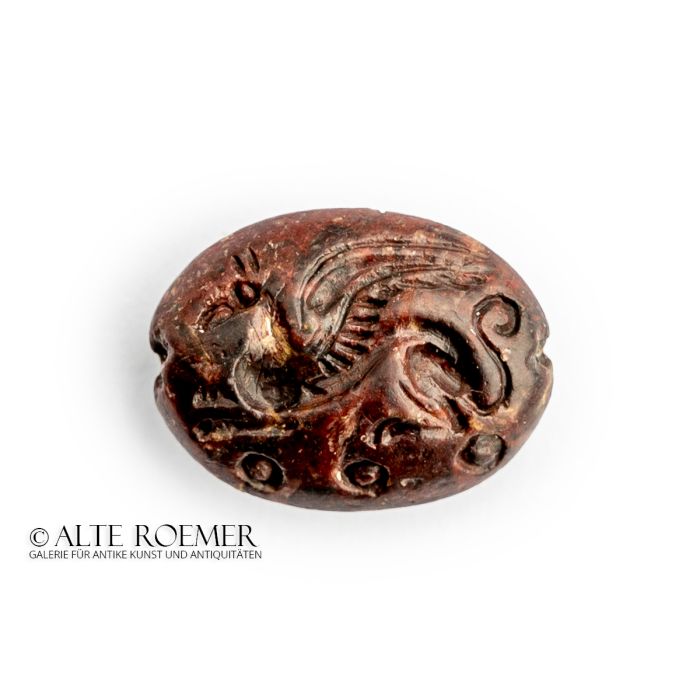Mycenaean seal with griffin
Price: on request
Sold
Object number
AR3173
| Object: |
Mycenaean seal with griffin
|
| Material: |
Red jasper.
|
| Period: |
Late Helladic I to II. Circa 1600 BC to 1400 BC. |
| Description: |
Flat seal of oval shape with two convex sides. A through hole runs along the longitudinal axis, through which the seal could be threaded. One side is smooth and undecorated. The other side has an elaborate engraving. The stamp shows a lying griffin. The fantasy creature is shown sideways, with the body of a lion and the head of a bird of prey with a large beak and pointy ears. Large wings emerge between the shoulder blades. Three circles form a kind of baseline under the creature.
|
| Background: |
The Mycenaean and Minoan art of engraving stones stands at the beginning of a long tradition. Ancient art was strongly influenced by it and it is exciting to see which elements were taken up again after the Dark Ages in the Mediterranean. The griffin is one such example. The mythological creature appears in numerous narratives of Greek culture, from the Bronze Age through to antiquity. In this case, the iconography speaks for an origin from the Aegean or Anatolian region and the Mycenaean culture. Preserved Mycenaean seals are very rare in museums and private collections.
|
| Dimensions: |
16mm length, 12mm width, 6mm thickness.
|
| Condition: |
Excellent condition, the marks of wear stem from the use of the seal in the Bronze Age. Except for tiny bumps, completely intact with clearly identifiable motif. Seal impression not included.
|
| Provenance: |
Acquired by us on the British art market in 2021. Previously in the A.L. family collection, London. Acquired into the collection on 8 September 1973 from John Siddeley, London (a copy of the invoice is available). The mention of a leather box the seal was set in suggests that it was previously in a private collection.
|
| Authenticity: |
We unconditionally guarantee the authenticity of every artefact, all items are subject to our lifetime return policy on authenticity.
|


